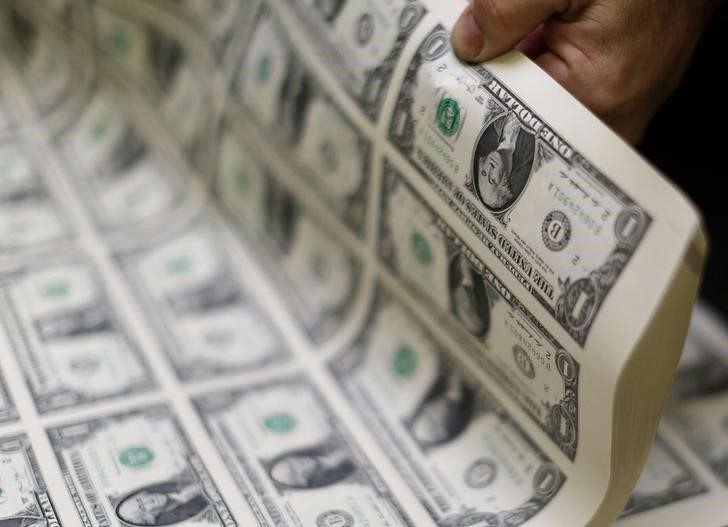Investing.com - The dollar dropped to one-month lows against a basket of other major currencies on Thursday, as the Federal Reserve's latest policy statement weighed broadly on demand for the greenback and as investors eyed upcoming U.S. inflation and jobless claims data.
The greenback came under pressure after the Fed lowered both its U.S. growth forecast and its interest-rate projections, prompting investors to push back expectations on the timing of an initial rate hike.
Fed Chair Janet Yellen said the central bank wanted to see "more decisive evidence" of sustained growth before raising rates, but acknowledged that the economy has "expanded moderately" after a weak first quarter.
The U.S. dollar index, which measures the greenback’s strength against a trade-weighted basket of six major currencies, was down 0.64% at 93.88, the lowest since May 18.
EUR/USD advanced 0.60% to 1.1405 although sentiment on the euro remained vulnerable as a deadlock between Greece and its international lenders continued ahead of the approaching deadline for Greece’s repayments to the International Monetary Fund.
Europe wants Greece to make spending cuts in order to secure a deal that will unlock €7.2 billion in bailout funds and prevent Athens defaulting on its debts when its bailout expires at the end of the month.
But Greek Prime Minister Alexis Tsipras stuck to a hard line on Wednesday, reiterating that further cuts cannot be made.
The pound was also higher, with GBP/USD up 0.55% to seven-month highs of 1.5917 after data showed that U.K. retail sales ticked up 0.2% in May, in line with forecasts. April's figure was revised down to show a gain of 0.9%, from a previously reported 1.2%.
Core retail sales, which exclude automobile sales rose 0.2% last month, compared to forecasts for a 0.1% rise.
Elsewhere, the dollar was lower against the yen and the Swiss franc, with USD/JPY down 0.69% to 122.57 and with USD/CHF retreating 0.56% to one-month lows of 0.9168.
Earlier Thursday, the Swiss National Bank maintained its rate on sight deposits at minus 0.75%, in line with economists’ forecasts. The central bank also left the target range for the three-month Libor unchanged at between minus 1.25% and minus 0.25%.
The SNB also reiterated that it is prepared to remain active in currency markets to reduce the impact of the "overvalued" franc on the economy.
The Australian dollar was sharply higher, with AUD/NZD up 1.07% to 0.7832, while NZD/USD dropped 0.46% to five-year lows at 0.6956.
The kiwi was hit after official data earlier showed that New Zealand's gross domestic product rose by 0.2% in the first quarter, confounding expectations for an increase of 0.6%. Year-on-year, GDP rose by 2.6% in the three months to March, less than the expected 3.0% increase.
USD/CAD declined 0.63% to trade at 1.2156.
